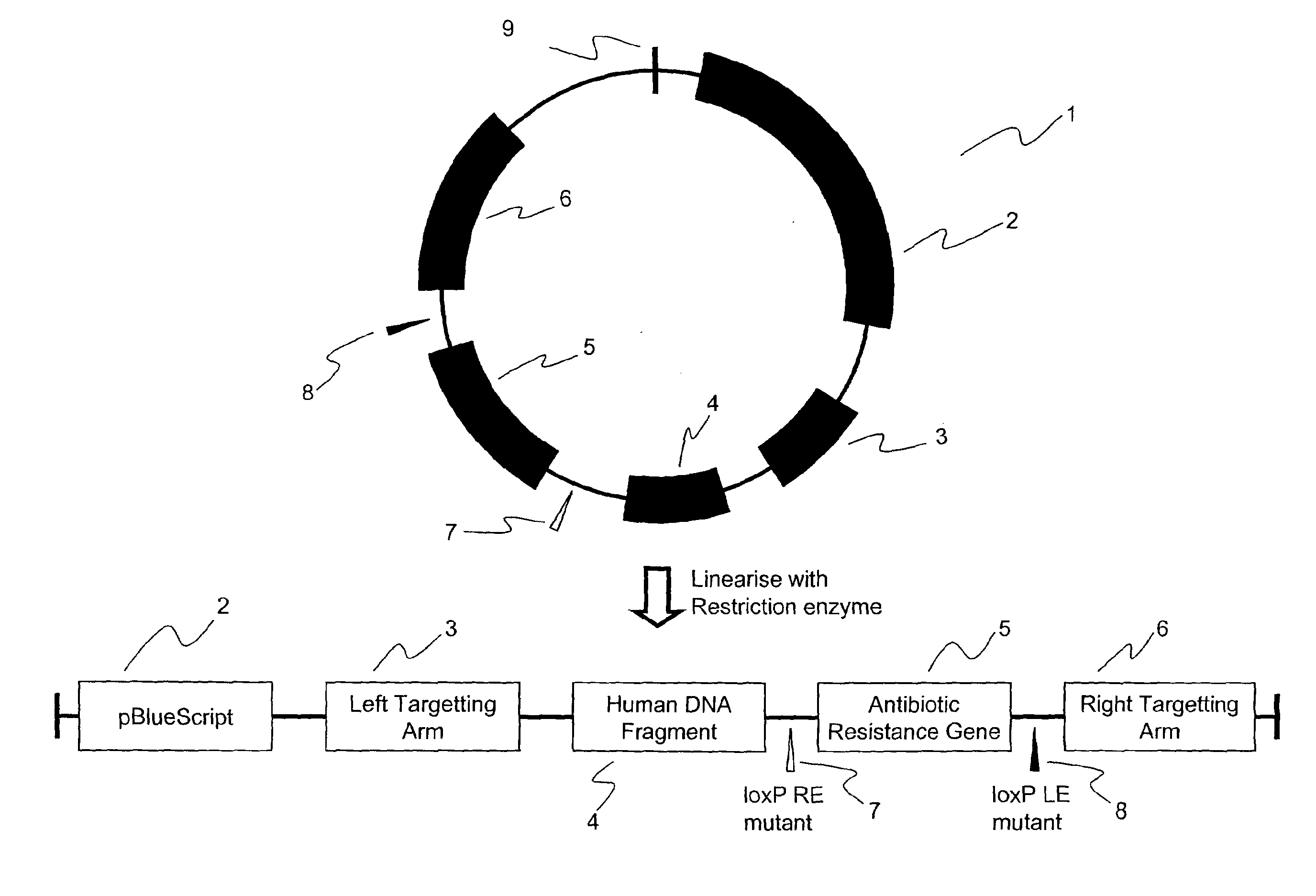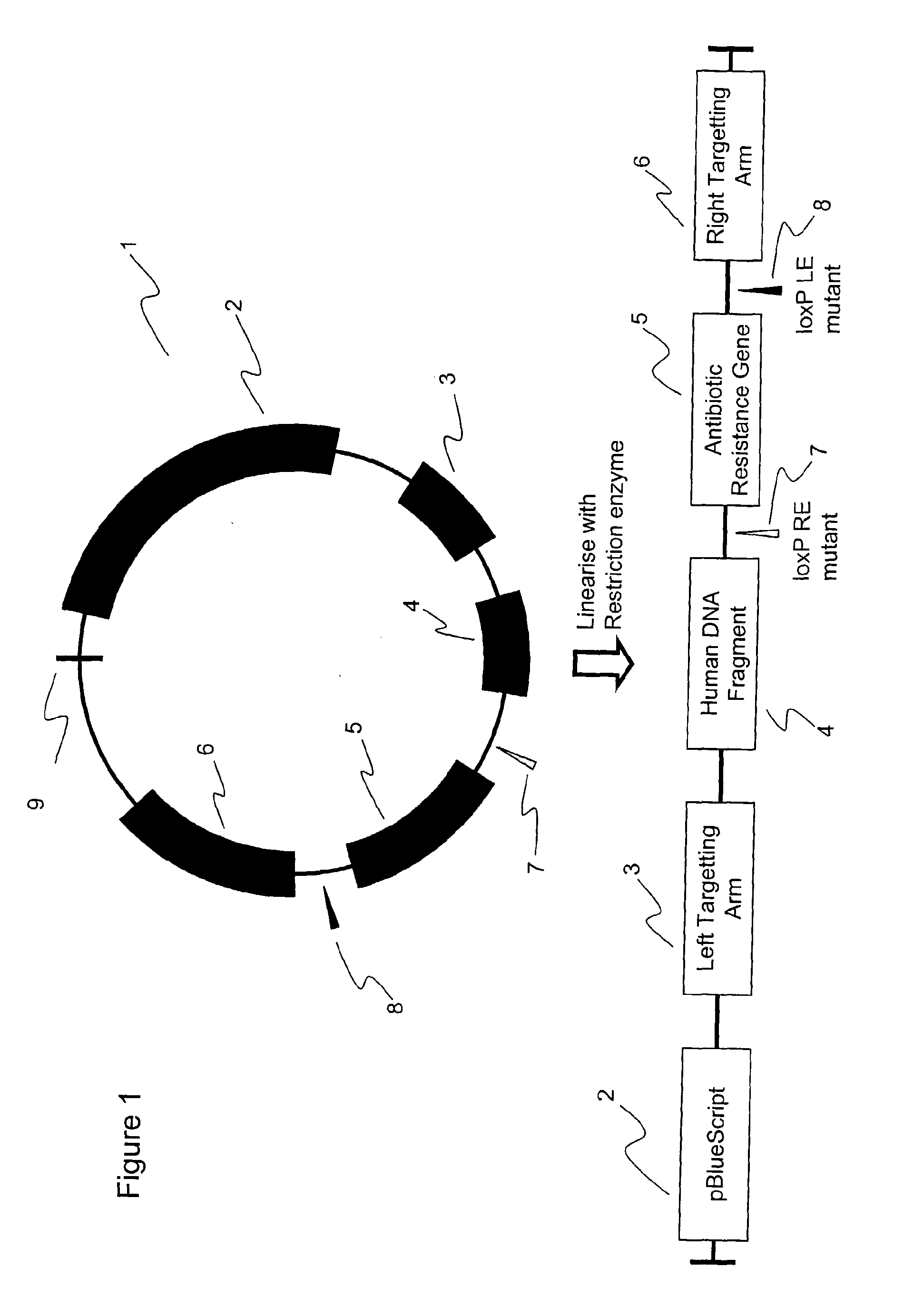Genetic reference materials
a technology of reference materials and genetic material, applied in foreign genetic material cells, biochemistry apparatus and processes, blood/immune system cells, etc., can solve the problems of lack of precision in its use, birth or failure to diagnose an affected child, and significant contamination risk in a typing laboratory
- Summary
- Abstract
- Description
- Claims
- Application Information
AI Technical Summary
Benefits of technology
Problems solved by technology
Method used
Image
Examples
embodiment 1
[0066]This embodiment illustrates a way in which the invention may be worked to create a genetic reference standard by insertion of a human genetic reference sequence into a dispensable region of the genome of the chicken DT40 cell line.
[0067]FIG. 1 shows, diagrammatically, a targeting vector that may be used to realise the current invention. The vector, generally 1, comprises the pBluescript sequence 2, of use in the bacterial stages of construction of the targeting plasmid, a left targeting arm 3, the human DNA fragment 4 to act as the reference material, an antibiotic resistance gene 5 and a right targeting arm 6. The targeting arms carry chicken DNA sequences for homologous recombination, enabling the integration of the human sequence and the antibiotic resistance gene into a specific site of the DT40 genome. The antibiotic resistance gene 5 may be flanked by mutant LoxP sites 7, 8. In the example shown in FIG. 1, there is a LoxP RE mutant 7 and a LoxP LE mutant 8. These LoxP si...
embodiment 2
[0072]This embodiment demonstrates how the invention may be worked to create a di-allelic genetic reference standard.
[0073]FIG. 2 illustrates the first part of the cell line construction process. There is illustrated a plasmid 14 containing the pBluescript sequences 2, a left targeting arm 3 and a right targeting arm 6, and an antibiotic resistance marker 15 with appropriate promoters. The plasmid also has the mutant LoxP sites 7 and 8. The first human genetic reference sequence which will make up one of the alleles is illustrated as 16.
[0074]Host DT40 cells to be transformed in this first step are represented by 11 with the two native chicken DNA alleles 12 and 13 illustrated at the cloning site.
[0075]Following recombination after introduction of the plasmid 14 into the host cells 11, three cell types may be present. Cell type 17 represents a hemizygote containing the integrated human genetic reference sequence 16 and the antibiotic resistance marker 15 flanked by the two mutant Lo...
PUM
| Property | Measurement | Unit |
|---|---|---|
| stability | aaaaa | aaaaa |
| length | aaaaa | aaaaa |
| total length | aaaaa | aaaaa |
Abstract
Description
Claims
Application Information
 Login to View More
Login to View More - R&D
- Intellectual Property
- Life Sciences
- Materials
- Tech Scout
- Unparalleled Data Quality
- Higher Quality Content
- 60% Fewer Hallucinations
Browse by: Latest US Patents, China's latest patents, Technical Efficacy Thesaurus, Application Domain, Technology Topic, Popular Technical Reports.
© 2025 PatSnap. All rights reserved.Legal|Privacy policy|Modern Slavery Act Transparency Statement|Sitemap|About US| Contact US: help@patsnap.com



